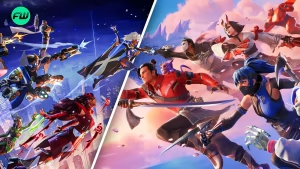“I hope GTA 6 isn’t DEI heavy”: Call of Duty, GTA 6 and Many Other Games Allegedly Choosing “Bisexual Lighting” is a Matter of Concern For Many

In the world of gaming, queer representation has become a huge ask. We have seen how games like GTA 6, Call of Duty, Valorant, etc., are leaving no stone unturned to make the world a better place at all, to make the genders outside male and female realize that they belong too. However, if this approach is being overused, then it might be a problem for the fans.

Sadly, this is exactly what is seen in most of the Western games. If the whole game becomes about queer representation, then the whole point becomes a matter of disgust, not something to be proud of.
Bisexual lighting – A concern in games like GTA 6 and Call of Duty

If you have looked closely at it, you will realize that most of the games developed by Western studios, like GTA 6, Call of Duty, and many more have stuck to a particular color scheme. This purple-bluish neon effect-like color theme is generally used to show support for the LGBTQ community. It’s a noble implementation, and everyone should follow that as well, but why has it been infested all over the Western gaming industry?
Fans haven’t liked this either. If the companies are using these special comminutes as a victim card in every sense, when everyone is trying to normalize, then obviously it is going to annoy people. Now, talking about that particular color scheme, this is actually “bisexual lighting.” Fans are already fed up with GTA 6‘s ongoing secrecy, now this approach might disgust them more.
It’s called bisexual lighting look it up it’s a thing
— Fear lantern (@Misterj_69) December 10, 2024
Bisexual lighting, which refers to the use of pink, purple, and blue hues to evoke a bisexual-soaked look in video games, movies, television shows, and even live music in accordance with the bisexual flag, which features these very colors, has gained so much attention over the past ten years that it now has its own Wikipedia page.
White, Blue, & Pink, The mark of a Trans Activist.
— MaverickHunterUnit242 (@HunterUnitZero) December 10, 2024
In these situations, sexual orientation or bisexuality is, quite frankly, an afterthought. They might capitalize on the stereotype of the bisexual who spends all of their time in a nightclub under the neon lights. In that regard, it could be problematic and, for the sake of the gaming industry, depict a community based on the best guesses and fantasies of some big-shot directors.
However, since these lights dominate the screen, it is difficult to argue that the use of two particular wavelengths is inherently linked to the idea of bi-men’s denial, the myth of bi-women’s promiscuity, or anything else as complicated.
Insomniac Games personnel think LGBTQ representation in video games is very poor

Despite being the over-infestation of bisexual lighting in video games, queer representation hasn’t become the norm. That’s why the Associate Narrative Director at Insomniac Games, Mary Kenney, has stated “LGBTQ gamers don’t feel that developers are thinking of them when they design games.”
Kenney herself has done a great deal for this video game community. She has contributed to the development of some of the most well-known queer video game characters, such as Clementine and Violet from Telltale’s The Walking Dead.
Numerous efforts have been made to improve the world for everyone. Around the world, awareness is raised through books, music, films, and many other mediums.
At the end of the day, everything should have a proper balance and needs to hit the point, not just satisfy some agenda. While the players’ concerns are understandable, it doesn’t always necessarily mean the games are going for LGBTQ representation in them.
This post belongs to FandomWire and first appeared on FandomWire






